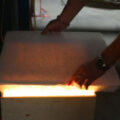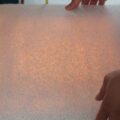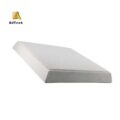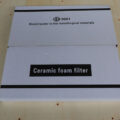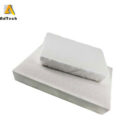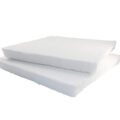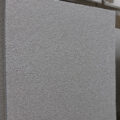AdTech ceramic filter for foundry adopts a three-dimensional network structure, which is superior to the honeycomb foam type. AdTech ceramic foam filters for casting has the advantages of high opening rate, small filtration resistance, small static difference, high surface energy, strong adsorption of heterophase, excellent thermal shock resistance, high strength, and no slag.
AdTech foam ceramic filters are widely used in aluminum filtration and purification in the aluminum processing industry, so as to improve the quality of aluminum materials. AdTech foam ceramic filters apply for the environmental protection engineering and thermal energy utilization, catalytic carriers, and other fields.

Ceramic Filter for Foundry Purification Mechanism
- The filtration efficiency is proportional to the pore size of the ceramic filter for foundry. The smaller the mesh, the stronger the ability to intercept small particles.
- Deposit layer or filter cake layer effect. With the deposition of particles in the melt and the intersecting and uneven grid support, the ability to capture heterogeneous particles has improved.
- The rough surface formed by the gap of the scaffold body increases the interface between the aluminum liquid and the ceramic filter. It can promote the particles in the aluminum flow, and make them more disorder, which is conducive to the capture and deposition of solid particles.
- Due to the micro-cracks and pinholes on the mesh support body, fluorides with a strong affinity for particles (Al2O3) are pre-deposited. It promotes a complete filter cake layer effect and strong chemical adsorption.
- Furthermore, the temperature field effect of the smelting process and the transmission process will inevitably form a difference of the alloy solute. The metal melt is redistribution — integration — redistribution — integration, this is also a very good alloying process. Some high-melting metal phases and compounds re-aggregate and grow, and the fine heterogeneous phases grow and conduce to filtration and capture. This can also be explained by the changes in the concentrations of H, Al2O3, Fe phase, and Ti phase. Especially two-stage filtration or pore gradient thick plate filtration is more obvious.
- Therefore, under the same preconditions, the new foam ceramic filter for casting has a high removal rate of aluminum melt heterophase. The change of static pressure difference before and after filtration is greater with time, and the change of H content in the aluminum melt is also obvious. Of course, the smaller the ceramic filter for foundry pores, the better the cleanliness of the aluminum melt.

